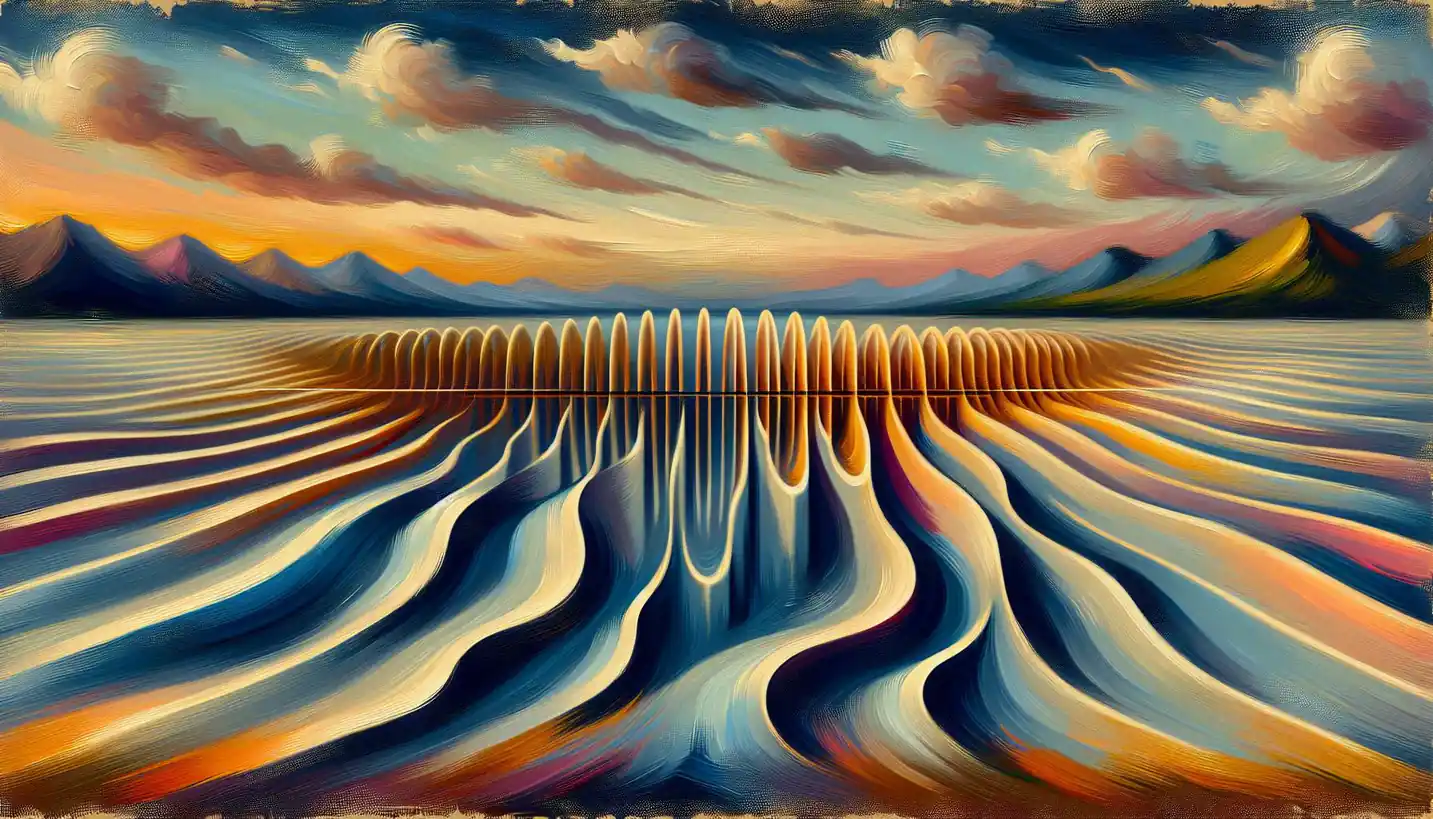· Physics · 5 min read
Orbital Velocity: A Journey Through Gravitational Physics
Orbital velocity lets planets stay in their graceful path. Understand how this critical speed balances gravitational pull and inertia in space.

Have you ever watched a satellite smoothly circle the Earth and wondered why it doesn’t just fall back down or drift away into space? The answer lies in the fascinating concept of orbital velocity—a key player in the dance of gravity and motion that governs the universe.
What is Orbital Velocity?
Orbital velocity is the speed that an object, like a satellite or a planet, must have to keep orbiting around another body, such as a star or a planet, without falling into it or soaring off into space. Imagine tossing a ball on a carousel; if you spin it just right, it keeps going around, circling continuously. Orbital velocity is kind of like that perfect speed.
The Role of Gravity
Gravity is the invisible hand that pulls objects toward each other. It’s what keeps us planted on Earth and what dictates the movements of planets and moons. When something orbits, it’s caught in a delicate tug-of-war between its forward motion and the pull of gravity. Reach the right speed, and the object stays in orbit.
Finding the Sweet Spot
The idea is to reach a balance. If a satellite moves too slowly, gravity will pull it down. Too quickly, and it shoots off into space. The magic number—orbital velocity—depends on two main factors: the mass of the object being orbited and the distance from its center. The closer you are to the object, the faster you need to go. In contrast, farther out orbits require less speed.
Calculating Orbital Velocity
So how do we figure out this sweet spot? The basic formula stems from Newton’s Law of Universal Gravitation and his laws of motion. You get it by setting gravitational force equal to the necessary centripetal force that keeps the object moving in a circle. It’s a bit of math, but it boils down to this:
[ v = \sqrt{\frac{GM}{r}} ]
Here, ( v ) is your orbital velocity, ( G ) is the gravitational constant, ( M ) is the mass of the object being orbited, and ( r ) is the distance between the centers of the two objects.
Earthly Examples
Let’s bring it down to Earth—literally. If you’re launching a satellite to orbit just above our planet, it needs to have a speed of about 28,000 kilometers per hour (or approximately 17,500 miles per hour) to stay put in a low-Earth orbit. The International Space Station (ISS) orbits Earth at this speed, allowing it to circle the globe roughly every 90 minutes.
Going Higher and Slower
The farther out you go, the slower the speed needed to maintain orbit. For instance, geostationary satellites, which stay fixed over one position on Earth, orbit thousands of kilometers away and match Earth’s rotation, traveling at a more leisurely pace.
Why Does It Matter?
Understanding orbital velocity isn’t just academic. It’s crucial for space travel, satellite deployment, and even planning future missions to other planets. It helps scientists and engineers decide how much fuel a rocket needs, how to plot satellite paths, and how to ensure astronauts can travel to and from space safely.
Historical Insight
Even before space travel was possible, scientists like Johannes Kepler and Isaac Newton laid the groundwork. Kepler described how planets move in elliptical orbits, and Newton quantified gravity, setting the stage for the concept of orbital mechanics.
Real-Life Applications
In the real world, engineers apply this knowledge to design everything from communication satellites to Mars rovers. Consider GPS satellites; they rely on precise orbital paths to provide accurate location data. Without understanding orbital velocity, none of this technology would work as it does today.
The Bigger Picture
Delving deeper, the study of orbital velocity opens doors to exploring gravitational interactions beyond our planet. It helps us understand binary stars, black hole behavior, and the motion of galaxies. Our knowledge of how celestial bodies orbit one another paints a grand picture of the universe’s structure.
A Starry Future
The intrigue of orbital velocity isn’t just bound to current technology. Looking forward, its principles will guide humanity’s steps as we dream of distant planets. As we build faster spacecraft and more efficient rockets, mastering orbital mechanics remains a frontier of exploration.
Dreams and Mysteries
The future of space travel could involve orbiting massive, unknown asteroids or sending humans on long journeys to other stars. Much remains unknown, but the fundamental understanding of how objects travel around each other is a crucial piece of the puzzle.
Wrapping Up
Orbital velocity is a captivating blend of math, physics, and cosmic wonder. It’s a reminder of how simple principles govern the movements of stars and satellites alike, providing a glimpse into the beautiful order of the universe.
As we continue to push the boundaries of space exploration, the mechanics of orbit will remain a cornerstone, driving not just human curiosity but enabling us to reach new heights—literally and figuratively. Who knows, maybe one day you’ll witness the launch of a mission made possible through the power of calculated orbits, echoing the legacy of Newton and inspiring new generations to reach for the stars.


